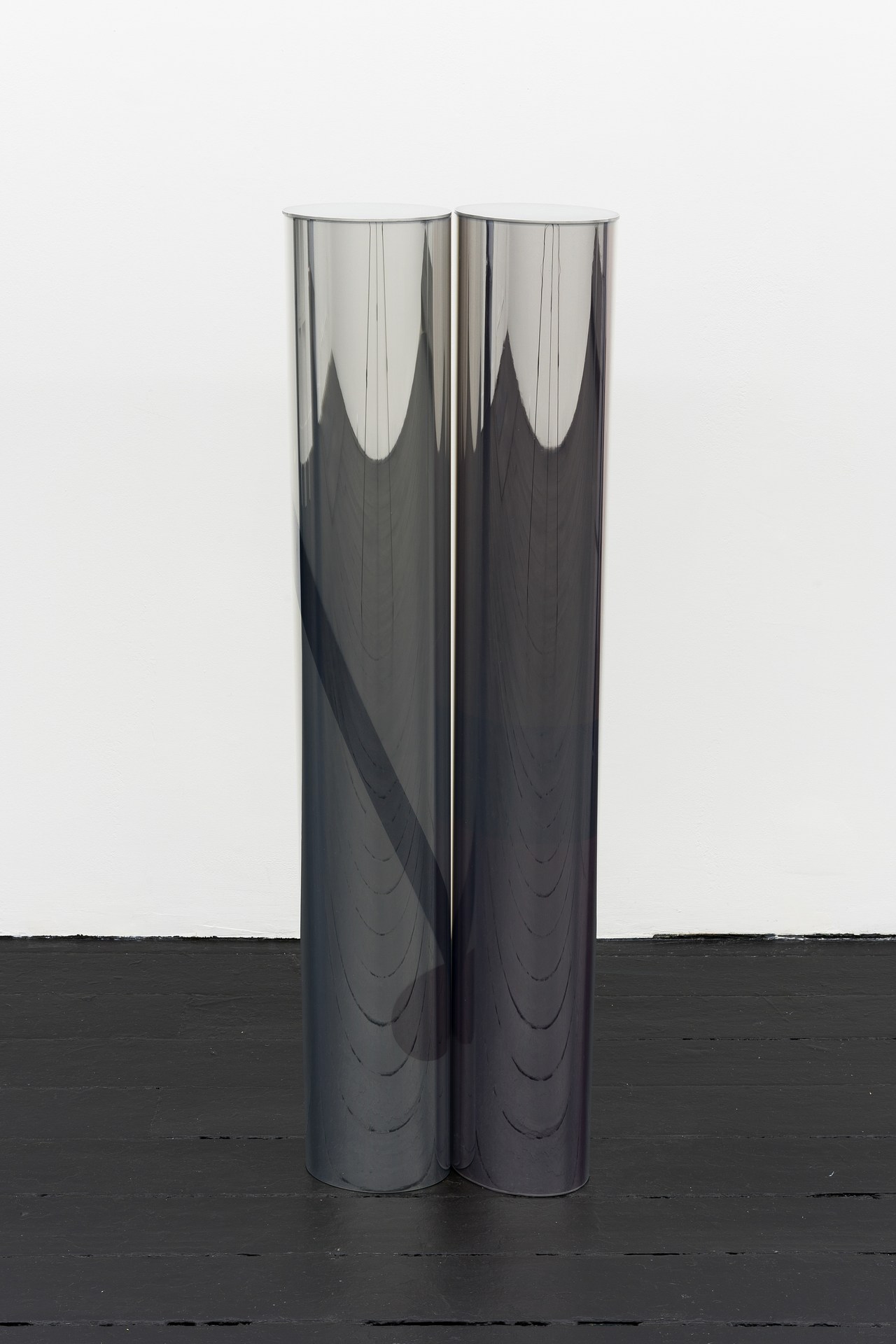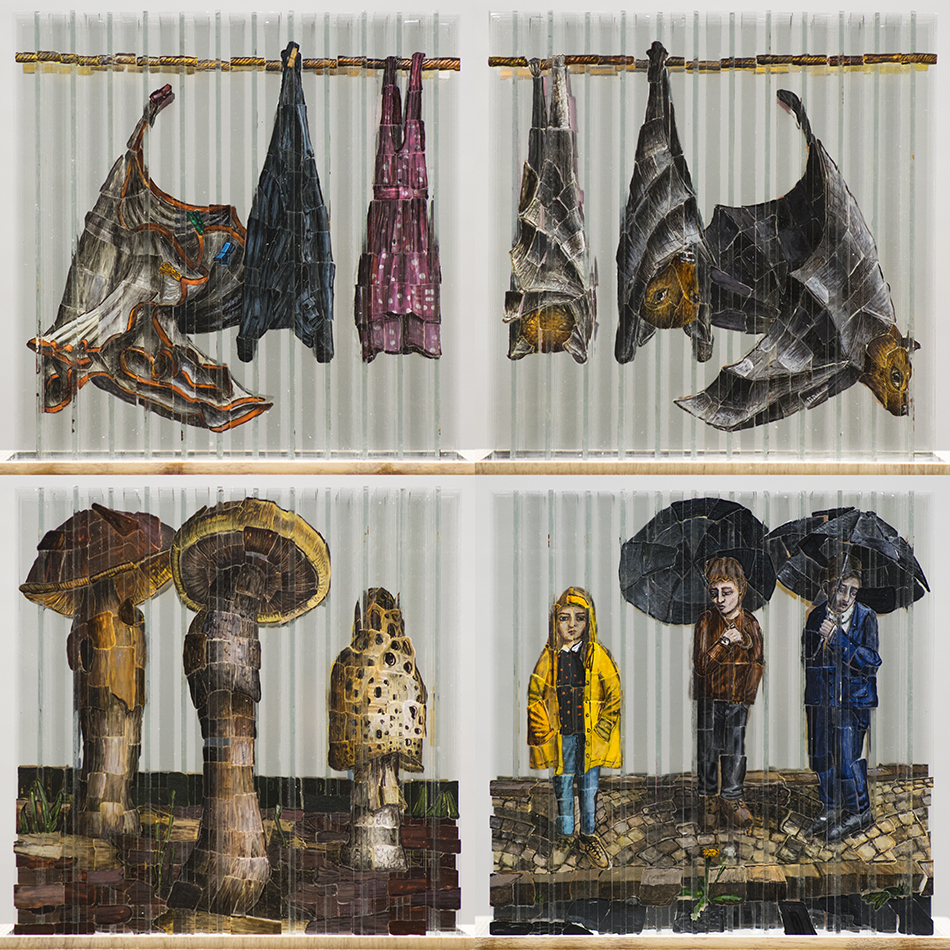Blindseye Arranger (Max)
2013 - Film & Video (Film & Video)
Brian Bress
Blindseye Arranger (Max) (2013) features a greyscale arrangement of rudimentary shapes layered atop one another like a dense cluster of wood block prints, the juxtaposition of sharp lines and acute angles creating an abstracted field of rectangular and triangulated forms composed as if in a cubist landscape. As the video progresses, however, a disembodied hand begins to move these forms, animating a pictorial frame that was previously still. The hand – ostensibly the “arranger” of the works title – functions as a metonym of the artist’s hand, quite literally bringing a motionless work to life. The hand in Blindseye Arranger , though, also signals a shift towards the performative, functioning as a reminder that all works of art are created by a maker’s “hand” and, in such, are never fully separate from the context in which they are made. Bress’s gesture towards interdisciplinarity in his work, by extension, signals an important moment in which questions of medium-specificity give way to more trenchant inquiries into notions of authorship and creative process.
Although originally trained in filmmaking and animation, Brian Bress explores the influence of pictorial traditions on contemporary media-based practices. His single-shot videos utilize painterly effects such as geometric abstraction to create visual compositions that blur presumed boundaries between contemporary media-based work and more traditional disciplines such as sculpture and painting. His work is deliberately processed-based and his videos, by extension, explore how visual motifs “evolve” over time through as a viewer engages with a given object or image. Animated figures and actors – such as disembodied hands – disrupt these seemingly still frames, repositioning these works in the context of film while also suggesting the presence of the artist’s hand. Bress’s videos may seem overtly indebted to creative lineages, and his images frequently border on the surreal. But in gesturing towards past works, his videos signal the emergence of creative practices enabled through technological advancements while also offering a meditation on a durational aesthetics privileged in media-based work.
Colors:
Related works sharing similar palette

© » KADIST
Hans-Peter Feldmann
The types of objects Feldmann is interested in collecting into serial photographic grids or artist’s books are often also found in three dimensional installations...

© » HYPERALLERGIC
Hiroshi Sugimoto’s Time-Traveling Lens Skip to content Hiroshi Sugimoto, "Lake Superior, Cascade River" (1995), gelatin silver print (all photos AX Mina/Hyperallergic) LONDON — The first image at the Hayward Gallery’s show of work by Japanese photographer Hiroshi Sugimoto is a pair of upright apes walking through a volcanic landscape...

© » ARTOMITY
Léon Wuidar at White Cube Hong Kong – ARTOMITY 藝源 Léon Wuidar / Jan 17 – Mar 16, 2024 / White Cube Hong Kong / 50 Connaught Road, Central / Hong Kong / +852 2592 2000 / Tuesday – Saturday, 11am – 7pm / whitecube.com Marking the artist’s inaugural show in Asia, White Cube is pleased to present a solo exhibition of paintings and works on paper by Léon Wuidar (b...

© » KADIST
Seminar The Place from Where We Look [[fn]The seminar’s title is a reference to Eduardo Grüner’s book El Sitio de la Mirada (2001).[/fn]] is the last chapter of Collecting Matters , a collaborative fellowship initiated by Kadist Art Foundation (Paris) with Nomas Foundation (Rome) and David Roberts Art Foundation (London) that marks a collective commitment to encourage new ways of thinking, sharing and producing knowledge about collections...

© » ARTS EQUATOR
ArtsEquator's Top 10 Picks at the Performing Arts Meeting 2019 | ArtsEquator Thinking and Talking about Arts and Culture in Southeast Asia Articles José Maceda, Cassettes 100, 1971, Photo by Nathaniel Gutierrez, Courtesy of UP Center for Ethnomusicology and Ringo Bunoan January 10, 2019 Established in 1995, the Tokyo Performing Arts Market (TPAM) was created to be a platform to network Japanese artists with producers and funders...

© » SLASH PARIS
Morvarid K — This too Shall Pass — Galerie Bigaignon — Exposition — Slash Paris Connexion Newsletter Twitter Facebook Morvarid K — This too Shall Pass — Galerie Bigaignon — Exposition — Slash Paris Français English Accueil Événements Artistes Lieux Magazine Vidéos Retour Morvarid K — This too Shall Pass Exposition Photographie Vue de l’exposition Morvarid K, This too Shall Pass, 2023 © D...

© » SLASH PARIS
Robert Courtright — Recovered time — Galerie Dutko / Quai Voltaire — Exposition — Slash Paris Connexion Newsletter Twitter Facebook Robert Courtright — Recovered time — Galerie Dutko / Quai Voltaire — Exposition — Slash Paris Français English Accueil Événements Artistes Lieux Magazine Vidéos Retour Précédent Suivant Robert Courtright — Recovered time Exposition Collage, peinture Robert Courtright Robert Courtright Recovered time Encore 27 jours : 1 février → 9 mars 2024 La galerie Dutko a le plaisir de présenter du 1 février au 9 mars 2024 la première exposition rétrospective de l’artiste américain Robert Courtright (1926-2012) à Paris...

© » KADIST
Ha Tae-Bum
2010Ha Tae-Bum’s “White” series, started in 2008, begins with photographic images from the mainstream media depicting sites of conflict or crisis...

© » KADIST
Catherine Opie
1994Although best known as a provocateur and portraitist, Opie also photographs landscapes, cityscapes, and architecture...

© » KADIST
Yin-Ju Chen
2016Through a semi-fictional approach, Extrastellar Evaluations envisions a version of history in which alien inhabitants, the Lemurians, lived among humans under the guise of various renowned conceptual and minimal artists in the 1960s (Carl Andre, Mel Bochner, and James Turrell to name a few)...










